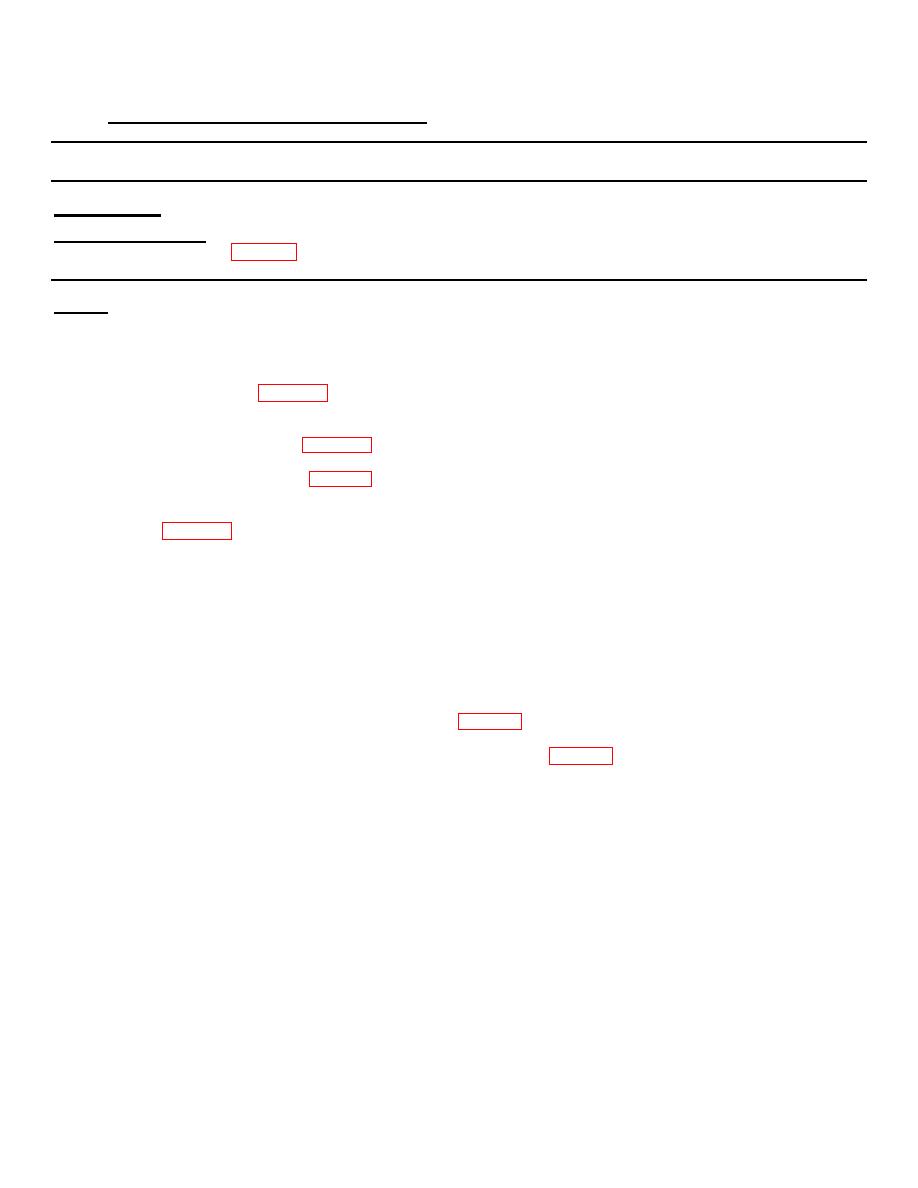
TM 9-4110-258-13
5.14
REFRIGERANT SYSTEM PRESSURE CHECK
This task covers:
a. Testing
INITIAL SETUP
Equipment Conditions:
Service manifold installed (para 5.7).
Testing.
(1) Check that all four service manifold valves are closed.
(2) Service manifold compound and pressure gauges should indicate the same pressure. Check the reading with the
appropriate column in Table 5-1. If the system is even partially charged, the pressure should be approximately
equal to that shown in the table for the appropriate ambient temperature. If the pressure is considerably less
than shown in the table, the system does not contain enough refrigerant to continue the pressure check. Leak
test the refrigeration system (para 5.11).
(3) Turn the refrigeration unit on (para 4.8) and operate at desired setting.
(4) With the refrigeration unit operating, allow service manifold gauges to stabilize. Compare readings with those
listed in Table 5-1.
(a) If discharge and suction pressure are at, or near, the same value, defrost solenoid valve (L2) or
compressor (B1) failure is indicated.
(b) If discharge pressure is low and suction pressure is normal, a low refrigerant charge is indicated.
(c) If discharge pressure is normal and suction pressure is either high, or low, failure of the expansion valve is
indicated.
(d) If discharge pressure is high and suction pressure is normal, refrigerant overcharge is indicated. If charge
is correct, refer to troubleshooting procedures (para 5.1).
(5) When pressure tests are completed, turn the refrigeration unit off (para 2.7) and disconnect power.
5-27

